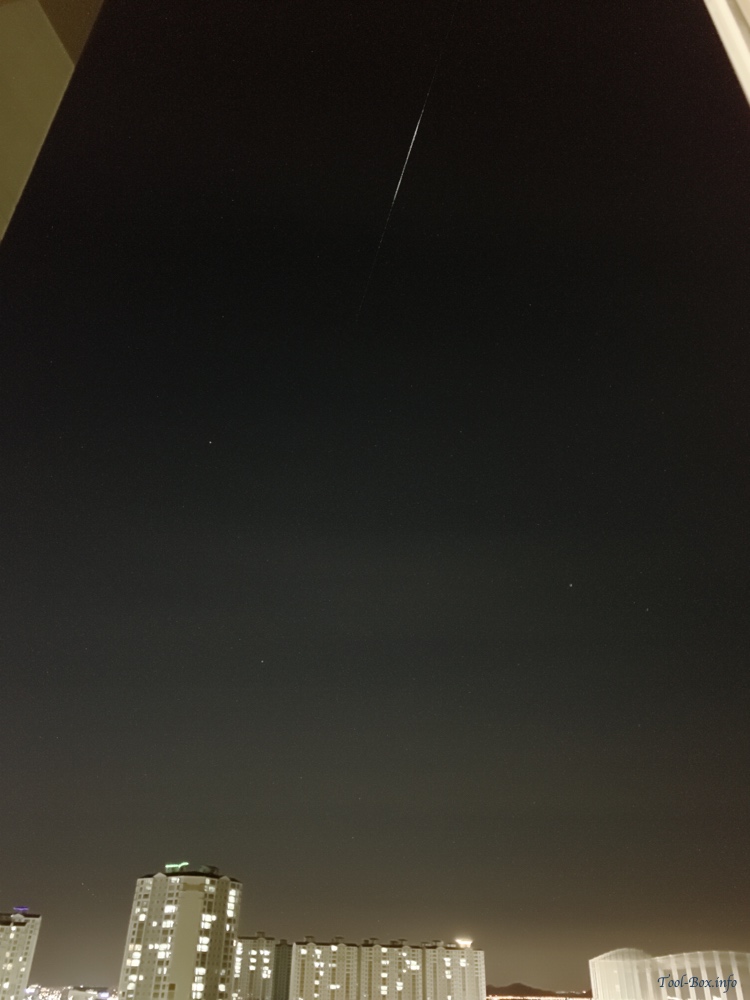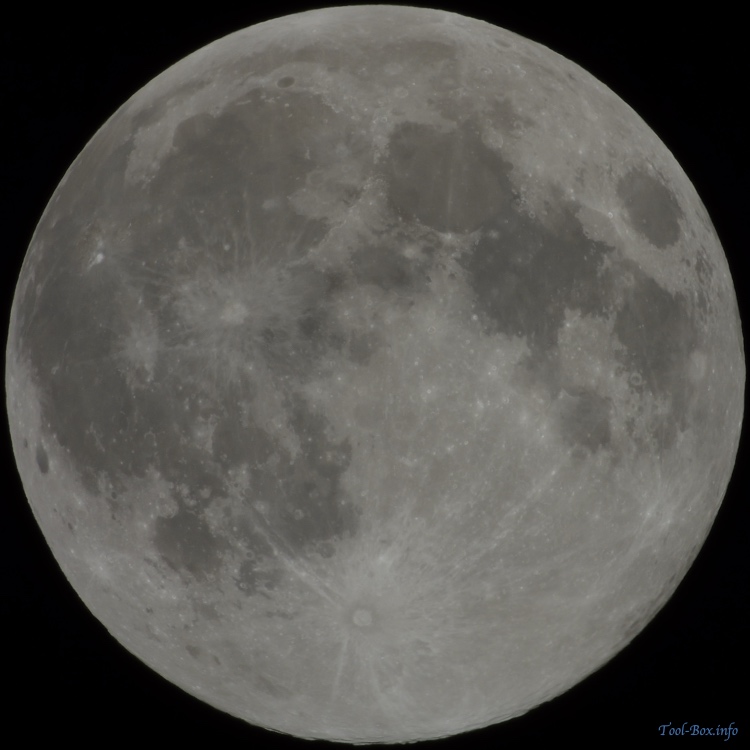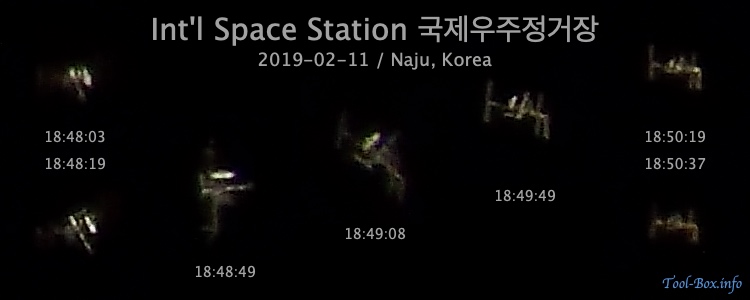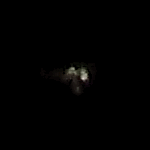The two satellites
Posted by Wesley on
Night sky is home to various satellites, both natural and artificial. I've taken photos of these objects in the past few days and here are a couple them for you to enjoy.
The Iridium satellites are known for their flares caused by the interesting shape of their antennae. I had a chance to observe Iridium 97 moving down the northern sky with my iPhone XS. While the satellite shined noticeably for about twenty seconds, this merging of a 1-minute, 610-photo session reveals that it was still dimly visible for some time before and after that. The rest of the satellite reflects the sunlight, just not as effectively.
Device: iPhone XS
Settings: 26mm - ISO 2500 - 1/15s - f/1.8
Filters: None
Time: 2019-02-17 19:04:46-19:05:46 KST
Location: Naju, Korea
610 photos merged with Startrails 2.3
This lunar year's first Full Moon (Jeongwol Daeboreum) was coincidentally a Super Moon. A bigger one would not appear until December 24, 2026. I took this photo just moments after the phase reached its peak, with a visible size of 34' 02.37" and a distance of 350,840km. As a result, it appears nearly 4,000 pixels wide (3,955 pixels, 0.516"/pixel). Unless I keep using the P1000 seven years later, this would be the largest photo of the Moon this camera would ever take.
Device: Nikon P1000
Settings: 3000mm - ISO 100 - 1/400s - f/8
Filters: None
Time: 2019-02-20 01:11:49, 01:14:07 KST
Location: Naju, Korea
2 photos merged with Pixelmator 3.8.1
The Iridium satellites are known for their flares caused by the interesting shape of their antennae. I had a chance to observe Iridium 97 moving down the northern sky with my iPhone XS. While the satellite shined noticeably for about twenty seconds, this merging of a 1-minute, 610-photo session reveals that it was still dimly visible for some time before and after that. The rest of the satellite reflects the sunlight, just not as effectively.
Device: iPhone XS
Settings: 26mm - ISO 2500 - 1/15s - f/1.8
Filters: None
Time: 2019-02-17 19:04:46-19:05:46 KST
Location: Naju, Korea
610 photos merged with Startrails 2.3
This lunar year's first Full Moon (Jeongwol Daeboreum) was coincidentally a Super Moon. A bigger one would not appear until December 24, 2026. I took this photo just moments after the phase reached its peak, with a visible size of 34' 02.37" and a distance of 350,840km. As a result, it appears nearly 4,000 pixels wide (3,955 pixels, 0.516"/pixel). Unless I keep using the P1000 seven years later, this would be the largest photo of the Moon this camera would ever take.
Device: Nikon P1000
Settings: 3000mm - ISO 100 - 1/400s - f/8
Filters: None
Time: 2019-02-20 01:11:49, 01:14:07 KST
Location: Naju, Korea
2 photos merged with Pixelmator 3.8.1



